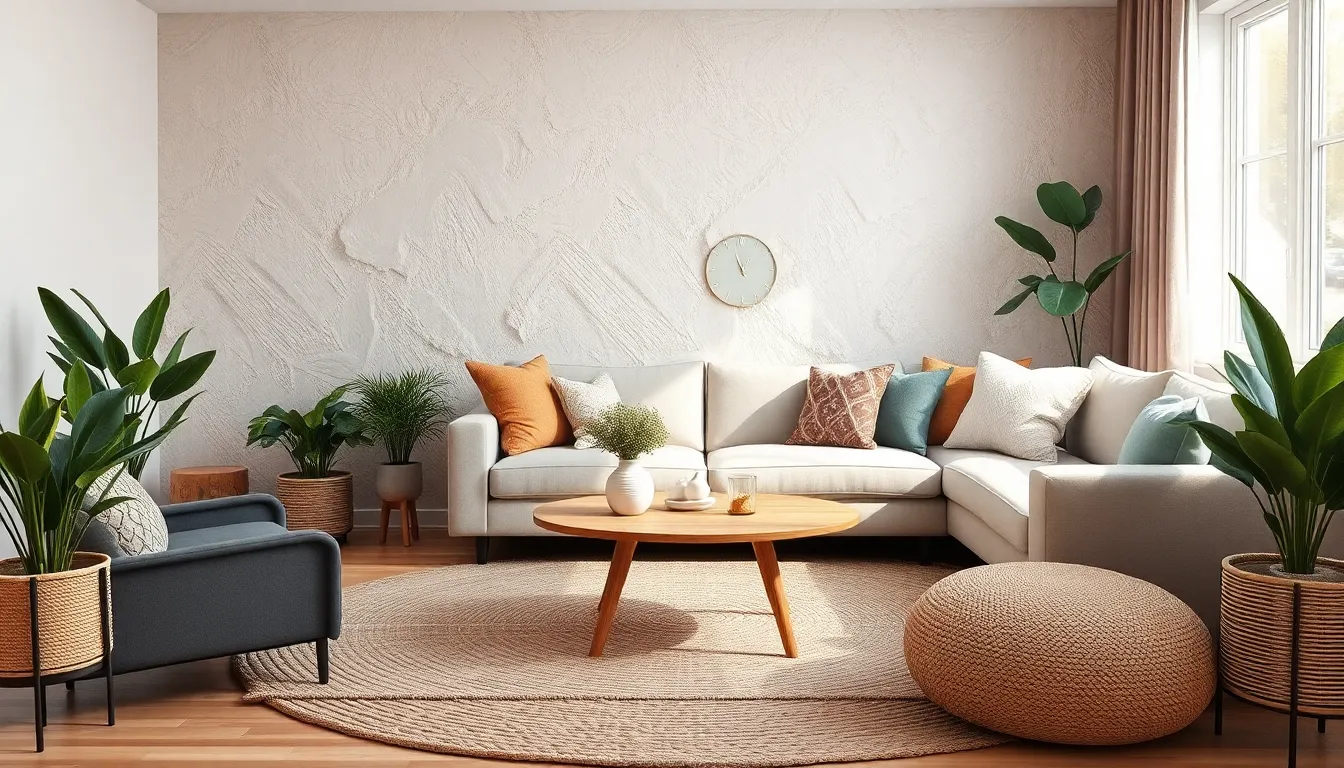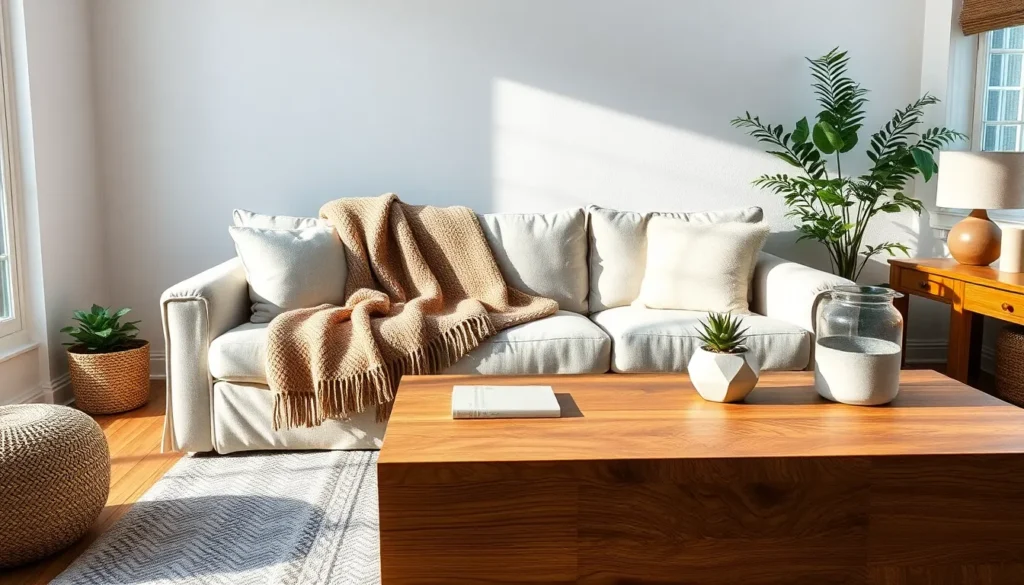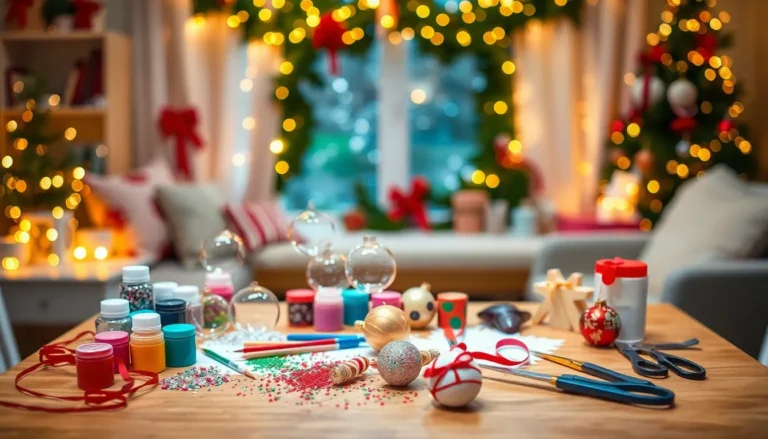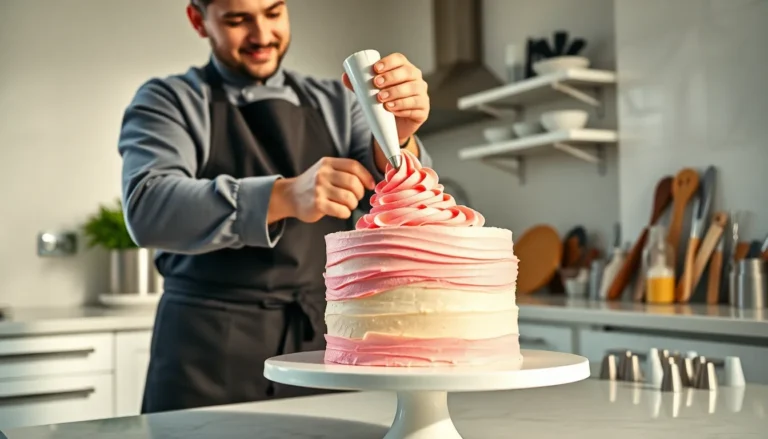Table of Contents
ToggleIn the world of design, subtle textures can transform ordinary spaces into extraordinary experiences. They add depth and character without overwhelming the senses, creating a harmonious balance between visual appeal and tactile engagement. Whether in interior design, graphic art, or fashion, the careful application of texture can elevate a project from mundane to memorable.
Understanding how to incorporate these nuances is essential for any designer. By layering different materials and finishes, they can achieve a sophisticated look that invites touch and exploration. This article delves into the art of subtle texture use, offering insights and practical tips for harnessing its power to enhance aesthetic quality and evoke emotion in any creative endeavor.
Understanding Subtle Texture Use
Subtle textures play a crucial role in design, providing depth and enhancing aesthetic experiences. They contribute to the overall atmosphere and tactile engagement in various creative fields.
Definition and Importance
Subtle textures refer to delicate and understated surface qualities that enhance visual intrigue without overwhelming the viewer. Their importance lies in their ability to transform spaces and objects, infusing personality and interest. Designers leverage these textures to create emotional connections, invite exploration, and enrich narratives in their work. Incorporating subtle textures fosters a balance between visual allure and practical application, making designs more engaging for users.
Types of Subtle Textures
- Natural Textures: Wood grain, stone surfaces, and fabric weaves present organic qualities that bring warmth and authenticity to designs.
- Graphic Textures: Patterns like hatching, crosshatching, and distressed looks add visual interest in graphic design, enhancing compositions without overpowering elements.
- Surface Finishes: Matte, satin, and gloss finishes create tactile contrasts, subtly influencing the perception of depth and dimension across various materials.
- Layered Textures: Combining multiple subtle textures—like a linen backdrop with a silk overlay—establishes complexity and enriches visual storytelling.
- Colorful Textures: Textured paint effects or colored plaster can introduce nuanced hues while enhancing tactile sensations, providing an element of surprise in design.
Incorporating these types of subtle textures allows designers to craft spaces and objects that resonate emotionally, making them memorable and inviting.
Applications in Design

Subtle textures play a critical role in various design fields, enhancing visual appeal and creating engaging experiences. Their application in interior design, graphic design, and fashion design showcases their versatility and impact.
Interior Design
In interior design, subtle textures introduce depth and warmth. Designers often use natural materials like linen, wood, and stone to create a calming atmosphere. Layered textures, such as combining soft fabrics with rough finishes, stimulate the senses and add complexity to spaces. Accent walls featuring textured wallpaper or plaster bring visual interest without overwhelming the room. Using tactile elements, like woven rugs or textured cushions, enhances comfort and invites interaction.
Graphic Design
Graphic design utilizes subtle textures to create visual hierarchy and intrigue. Designers incorporate backgrounds with soft patterns, gradients, or distressed finishes to draw attention without distracting from content. Textured typography adds a tactile quality to digital and print materials, making designs more engaging. Layering textures in illustrations or layouts can guide the viewer’s eye and maintain interest. Subtle textures often enhance brand identity, providing a unique character that sets a design apart.
Fashion Design
In fashion design, subtle textures contribute to garment aesthetic and tactile appeal. Designers often combine fabrics like silk, wool, and cotton, creating visual intrigue through contrast. Textured embellishments, such as embroidery or pleating, add dimension and interest to clothing. Layering pieces with varying textures offers depth in styling, enhancing the overall look. Subtle textures also heighten sensory experiences, making garments more inviting to wear.
Techniques for Implementing Subtle Textures
Subtle textures enhance design by creating depth and interest. Implementing these textures requires thoughtful techniques to achieve the desired effect.
Layering Textures
Layering textures involves combining multiple materials to create visual complexity. Designers layer fabrics, wallpapers, and surfaces for a rich tactile experience. This technique enhances the sense of depth in a space or object. For example, using a soft wool throw over a linen sofa creates contrast, attracting visual interest. Similarly, pairing a matte wall finish with a glossy accent can elevate the overall aesthetic. Consider the balance of textures to avoid overwhelming the viewer, ensuring harmony remains a priority.
Color Considerations
Color interacts with texture, influencing perception and mood. Designers should choose colors that complement subtle textures, enhancing their effects. Neutral tones often amplify natural materials like wood or stone, while muted hues can soften graphic patterns. For instance, a pastel palette can create a calming environment when applied to textured elements like woven fabrics or plaster finishes. Utilizing color gradients can also enhance texture visibility, drawing attention without distraction. Proper color selection can lend depth and emotional resonance to designs, ensuring they engage the audience effectively.
Benefits of Subtle Texture Use
Subtle texture use significantly enriches design outcomes by enhancing aesthetics and creating depth. By incorporating delicate surface qualities, designers can elevate their work across various disciplines.
Enhancing Aesthetics
Enhancing aesthetics through subtle textures introduces a layer of visual intrigue. Designers leverage natural textures like wood and stone to infuse warmth and character into spaces. Graphic textures such as patterns foster interest without overwhelming the viewer. The visual balance created by combining multiple textures enhances overall appeal, leading to more inviting environments. Designers effectively use tactile finishes to invite interaction, making it essential to consider texture in the overall design equation.
Creating Depth
Creating depth is a crucial advantage of integrating subtle textures. The visual complexity achieved through layering materials fosters a three-dimensional feel. For example, a combination of soft fabrics and hard surfaces results in a dynamic interplay that engages viewers. Layered textures can draw the eye, inviting exploration and enhancing the spatial experience. Designers implement techniques that mix matte and glossy finishes, allowing light to interact with surfaces, which further adds dimension. By employing subtle textures strategically, designers transform flat spaces into compelling environments that resonate emotionally with occupants.
Subtle textures play a pivotal role in transforming design across various fields. They enrich environments by adding depth and character while maintaining visual harmony. Designers who master the art of incorporating these delicate surface qualities can create spaces that invite exploration and emotional engagement.
The strategic use of layering materials and finishes not only enhances aesthetic appeal but also fosters a unique sensory experience. By understanding the nuances of different texture types and their applications, designers can elevate their work to new heights. Ultimately, the thoughtful integration of subtle textures results in memorable, inviting spaces that resonate with individuals on a deeper level.





